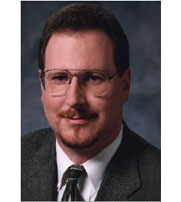Despite what’s being said by some carriers and vendors, mobile WiMAX seems to be moving at a quickstep pace. The WiMAX Forum will certify the first interoperable mobile broadband fixed wireless products by the end of this year and first products — some of which are being touted as 4G mobile wireless — are expected on the market early next year. Still, industry buzz is tinged with skepticism. Jeff Orr, the WiMAX Forum’s director of marketing, sorted out some of the more pressing issues facing what some believe is the next huge leap in telecom technology during a Q&A session with Telecommunications® magazine Senior Editor Jim Barthold.

“There is no continent and no major region that is untouched by WiMAX.”
Jeff Orr, WiMAX Forum
TM: Lots of people were burned badly during the wireless rampage of the late ’90s. Now it seems everyone is taking a cynical wait and-see attitude about WiMAX with some even dismissing the technology as vaporware. What’s really going on?
Orr: I’m quick to dismiss the notion that nothing’s happening; it’s quite the opposite. There is a tremendous amount of activity. The whole ecosystem is alert right (and) the challenge is how to describe how this is progressing.
TM: Some say it’s progressing all right; it’s just happening overseas because the North American market isn’t ready and doesn’t need another telecom format.
Orr: It’s global. There is no continent and no major region that is untouched by WiMAX. There are over 25 products available today that operators can purchase to bring broadband Internet services to homes, office and communities.
TM: That’s fixed/stationary WiMAX. What about mobile?
Orr: Most of the new information is about using WiMAX for mobile applications. We’re talking about devices in the form of add-in parts of computing platforms like notebooks as well as handsets, similar to what one might have with a cell phone or PDA today.
TM: You need batteries for those devices and, looking at Wi-Fi’s hunger for power, it seems a bit far out that WiMAX handheld batteries will last long enough to make an impact.
Orr: Optimizing a device for battery power consumption ... and how quickly that makes its way down into handheld devices is a matter of innovation RF engineers deal with on a daily basis. We’ve seen the same kind of behavior occur within the cellular phone world or laptop computers. These devices have made the same kind of transition.
TM: OK, given interoperable products, given extended battery life, and given a ready market, where do North American carriers get the spectrum to deliver mobile WiMAX effectively?
Orr: There are multiple bands available in the U.S. today. The most commonly discussed is 2.5 GHz, and we’ve already seen announcements from regional and national carriers like Clearwire and Sprint Nextel. Beyond that, there are interesting areas to explore through the recent auction of AWS spectrum in the U.S. That’s still evolving, but today the spectrum is definitely there, and we’ve already seen commitments from the network operators to [use] that spectrum [for] mobile WiMAX.
TM: WiMAX is frequently mentioned as a rural market savior. Is this where it stops — and potentially ends — in the U.S.?
Orr: That assumes some certain business decisions on the part of operators. If they feel in a rural community that there is sufficient demand for broadband services ... they can offer a competitive solution. The underlying technologies are not new; it’s just the first time it’s being packaged in a standardized package and being certified as meeting certain criteria. There are companies offering these kinds of products to existing operators, whether they are local exchange carriers, cable MSOs, entirely new entrants, wireless ISPs and so forth.
TM: Following up on that, is mobile WiMAX a way for non-traditional carriers to enter the mobile business on a piecemeal basis?
Orr: There is an opportunity for regional operators to look at mobile WiMAX as part of customized services intended for the individual: taking the Internet with you so that you’re not confined to the home or office; being able to have the Internet as a platform in the palm of your hand or in your lap and perform all the functions and more that one normally would do based on an existing broadband connection to a facility.
TM: To make this really happen, the user would have to roam between service provider territories and offerings. It’s hard to believe that cable companies would share with mobile operators or would share information or customers with wireline carriers.
Orr: There’s an effort under way today through the Forum for global roaming which tracks both the financial and business portions of how those transactions occur and, from a technical perspective, service is maintained. That’s an important opportunity for someone who’s looking more at a local or more targeted user base than one that says, “I’m just going to provide coverage in this part of the world or in this country.”
TM: Some early adopters took a flier on fixed/stationary WiMAX. Is that investment stranded or is there a migration path to mobile?
Orr: The ability for a set of services to be deployed by which a user can have both fixed and mobile access is a function of how the infrastructure itself develops. If the infrastructure is flexible enough to support multiple radios and be able to say ... it’s going to support some number of fixed and some number of mobile users, that is their business and they have the ability to do so. There’s nothing from an equipment perspective that precludes them from being able to support multiple types of applications.
TM: So the equipment migrates and everyone moves to mobile in 2007?
Orr: The equipment manufacturers that are part of the WiMAX Forum certainly have their own strategies of how they help move those who select portable WiMAX and migrate and grow into mobile applications.
